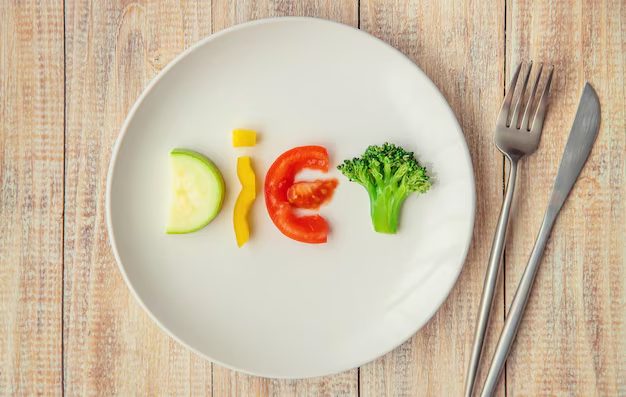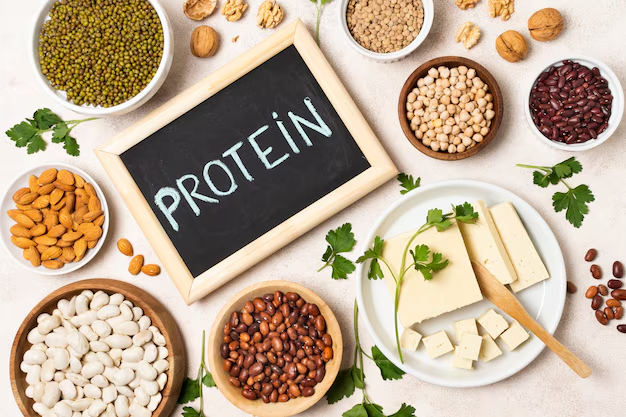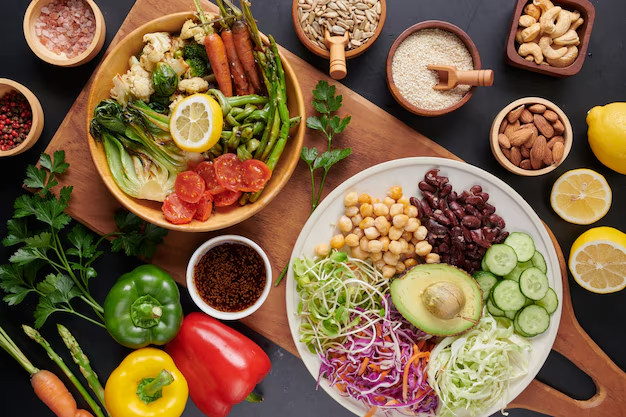The Balanced Plate: Building A Foundation For Healthy Eating
Introduction
In the fast-paced world we live in today, many of us find it difficult to maintain healthy eating habits. Convenience foods, busy schedules, and unhealthy cravings often undermine our efforts to eat well. However, maintaining a healthy diet is one of the most important things we can do to ensure long-term health and well-being. One of the most effective ways to guide our food choices and build a solid foundation for healthy eating is by following the concept of the balanced plate.
The balanced plate model is simple, easy to understand, and rooted in evidence-based nutritional science. By focusing on portion control, the inclusion of diverse food groups, and mindful eating practices, the balanced plate provides a framework that can help anyone make better food choices every day. This article explores the concept of the balanced plate, its importance, how to build one, and answers common questions related to healthy eating.
Key Takeaways
- A balanced plate consists of half fruits and vegetables, one-quarter lean protein, one-quarter whole grains or starchy vegetables, and healthy fats in moderation.
- The balanced plate model helps provide essential nutrients, supports weight management, and reduces the risk of chronic diseases.
- It’s important to vary the foods you eat to ensure you’re getting a wide range of nutrients and to choose whole, minimally processed foods.
- Meal prepping, portion control, and mindful eating can help you stay on track with the balanced plate approach.
What is a Balanced Plate?

A balanced plate is a visual representation of the ideal proportions of food groups to consume at each meal. The concept was popularized by the USDA’s MyPlate initiative, which replaced the previous Food Pyramid. The purpose of a balanced plate is to help individuals understand the nutritional value of different food groups and how they can be integrated into a single meal for optimal health.
A balanced plate typically consists of:
- Half of the plate filled with fruits and vegetables
- A quarter of the plate dedicated to lean protein sources
- A quarter of the plate filled with whole grains or starchy vegetables
- Healthy fats as a small addition, such as olive oil or avocado
- Water or other hydrating beverages on the side
Why is a Balanced Plate Important?
The balanced plate approach is important for several reasons:
- Provides Essential Nutrients: By including a variety of food groups, the balanced plate ensures that you’re getting a wide range of vitamins, minerals, and other nutrients your body needs to function properly.
- Supports Weight Management: When you fill your plate with nutrient-dense foods like fruits, vegetables, and lean proteins, you’re more likely to feel satisfied, reducing the chances of overeating. This helps with weight management and maintaining a healthy body weight.
- Promotes Energy and Focus: A balanced meal supports stable blood sugar levels, which leads to consistent energy throughout the day and improved mental focus.
- Improves Digestion: Including plenty of fiber-rich foods like fruits, vegetables, and whole grains aids in digestion and supports gut health.
- Reduces the Risk of Chronic Diseases: A balanced diet, rich in antioxidants, healthy fats, and lean proteins, can reduce the risk of developing chronic diseases such as heart disease, type 2 diabetes, and certain cancers.
The Components of a Balanced Plate
Let’s take a closer look at the different components that make up a balanced plate and their respective benefits.
1. Fruits and Vegetables (50%)
Fruits and vegetables are the foundation of a healthy diet and should fill half of your plate. They are packed with vitamins, minerals, antioxidants, and fiber, all of which contribute to overall health and wellness. Additionally, they are low in calories, making them a great option for weight management.
- Fruits: Provide essential nutrients such as vitamin C, potassium, and fiber. Examples include apples, berries, oranges, and bananas.
- Vegetables: Are rich in antioxidants, vitamins (like vitamin A, C, and K), and fiber. Cruciferous vegetables such as broccoli, spinach, kale, and carrots are great choices.
Try to choose a variety of colors for your fruits and vegetables to maximize your nutrient intake. The more colorful your plate, the more vitamins and minerals you are likely consuming.
2. Lean Protein (25%)

Proteins are essential for building and repairing tissues, producing hormones and enzymes, and supporting immune function. Protein also helps to keep you feeling full, which can aid in weight management.
- Animal-based proteins: Chicken, turkey, fish, lean cuts of beef, and eggs.
- Plant-based proteins: Beans, lentils, tofu, tempeh, edamame, quinoa, and nuts.
Opt for lean protein sources that are lower in saturated fat, such as skinless poultry or fish, and incorporate plant-based proteins for added fiber and healthy fats.
3. Whole Grains or Starches (25%)
Whole grains and starchy vegetables provide complex carbohydrates, which are the body’s primary source of energy. These foods are also high in fiber, which supports digestion and helps maintain stable blood sugar levels.
- Whole grains: Brown rice, quinoa, barley, whole wheat bread, oats, and whole grain pasta.
- Starchy vegetables: Sweet potatoes, corn, peas, and butternut squash.
Whole grains are the healthier option compared to refined grains, as they retain more of their natural nutrients, including fiber, B vitamins, and minerals like iron and magnesium.
4. Healthy Fats
Fats are an essential part of a balanced diet, providing energy and helping the body absorb vitamins A, D, E, and K. Healthy fats, in particular, can help reduce inflammation, support brain health, and improve heart health.
- Sources of healthy fats: Olive oil, avocado, nuts, seeds, and fatty fish (like salmon and mackerel).
While healthy fats are important, it’s essential to consume them in moderation. Too much fat, even from healthy sources, can lead to excess calorie intake.
5. Water or Hydrating Beverages

Water is a crucial part of any balanced meal, aiding in digestion, nutrient absorption, and maintaining hydration levels. Aim to drink water with every meal to support these functions. Herbal teas, unsweetened iced tea, and water with a splash of lemon or cucumber are also good options.
Avoid sugary drinks like sodas or highly processed fruit juices, as they can contribute excess calories and sugar to your diet.
Building Your Balanced Plate
Creating a balanced plate is simple and doesn’t require special skills or ingredients. Here’s how you can easily build your own balanced plate:
- Start with Vegetables: Fill half of your plate with a variety of vegetables. Aim to choose both leafy greens and colorful vegetables. If possible, choose fresh, frozen, or minimally processed options to maximize nutritional value.
- Add Lean Protein: Fill one-quarter of your plate with a source of lean protein. Try to include different sources of protein throughout the week, such as chicken, fish, beans, and legumes.
- Incorporate Whole Grains or Starches: The final quarter of your plate should be filled with whole grains or starchy vegetables. If you’re not sure what to choose, opt for whole grains like brown rice or quinoa over refined options like white rice or pasta.
- Include Healthy Fats: Add small amounts of healthy fats to your plate, such as a drizzle of olive oil over vegetables or a few slices of avocado on your protein.
- Hydrate: Drink water or another hydrating beverage to complement your meal.
Tips for Success
- Prepare Ahead of Time: Plan meals ahead of time and prep ingredients so that assembling a balanced plate becomes easy and convenient.
- Practice Portion Control: Keep in mind that balance also means managing portion sizes. While you want to include all food groups, you also want to avoid overeating.
- Limit Processed Foods: Avoid overly processed foods that can be high in sodium, unhealthy fats, and empty calories.
- Incorporate Variety: Try to vary the foods you eat each day to ensure you are getting a wide range of nutrients.
Why is a Balanced Plate Important?

Incorporating a balanced plate into your lifestyle can have numerous benefits for both short-term well-being and long-term health. Here’s why:
- Optimal Nutrient Intake: A well-balanced plate ensures you get a variety of nutrients, including vitamins, minerals, protein, fiber, and healthy fats, which are vital for your body’s functioning.
- Supports Healthy Weight: Balanced meals can help regulate appetite and improve metabolism. The combination of fiber, protein, and healthy fats promotes satiety, reducing the likelihood of overeating and emotional eating.
- Promotes Better Digestion: Consuming fiber-rich foods, like fruits, vegetables, and whole grains, helps regulate your digestive system. Additionally, the hydration aspect of the balanced plate supports healthy digestion and nutrient absorption.
- Energy Levels: Foods such as complex carbs and lean protein provide steady and long-lasting energy. This balanced approach helps prevent energy crashes that are common when consuming too much sugar or processed foods.
- Improves Mental Clarity and Focus: The right proportions of nutrients improve brain function, leading to better focus, mood, and productivity throughout the day.
- Reduces Chronic Disease Risk: A balanced diet lowers the risk of developing chronic diseases such as heart disease, diabetes, and cancer. Antioxidants from fruits and vegetables, healthy fats, and lean protein sources work together to reduce inflammation and support the immune system.
Tips for Success
- Meal Prep: Planning and preparing your meals ahead of time can save you time and ensure that you always have healthy options available. Batch-cook vegetables, grains, and proteins so that putting together a balanced plate becomes quick and easy.
- Mindful Eating: Focus on eating slowly and savoring your food. This helps your body better absorb nutrients and gives you the time to listen to your hunger cues.
- Limit Processed Foods: While it’s okay to indulge occasionally, make sure that the majority of your meals come from whole, minimally processed foods. These are more nutrient-dense and better for your health.
- Variety is Key: Eating a variety of foods ensures that you get all the essential nutrients and prevents boredom with your meals.
Also Read : How Can Embracing Body Positivity Improve Your Life?
Conclusion
The balanced plate is a simple yet powerful tool to guide healthy eating habits. By focusing on variety, portion control, and nutrient-dense foods, it’s possible to build meals that support long-term health and well-being. Whether you’re looking to maintain a healthy weight, improve digestion, or reduce your risk of chronic disease, the balanced plate approach provides a solid foundation for making healthier food choices. Remember that building a balanced plate doesn’t require perfection, just consistent effort and mindfulness. With time and practice, the balanced plate can become a natural part of your daily routine.
(FAQs)
1. How do I know if I’m eating enough of each food group?
To ensure you’re eating the right proportions, use the balanced plate model. Half of your plate should be fruits and vegetables, one-quarter lean protein, and one-quarter whole grains. Add healthy fats in moderation.
2. Can I eat carbs on a balanced plate?
Yes! Carbohydrates are an important part of a balanced diet, particularly complex carbs found in whole grains and starchy vegetables. These foods provide energy and fiber.
3. How do I make my plate more colorful?
Add a variety of fruits and vegetables in different colors to your plate. Each color represents different nutrients, so the more variety, the better.
4. Is the balanced plate model good for people with dietary restrictions?
Yes, the balanced plate model can be adapted for individuals with dietary restrictions. For example, people who follow vegetarian, gluten-free, or dairy-free diets can easily modify the plate to suit their needs.
5. Can I eat processed foods on a balanced plate?
While processed foods can be included occasionally, they should not be the focus of a balanced plate. Opt for whole, minimally processed foods for the most nutritional benefit.
6. How can I stay on track with my balanced plate if I’m busy?
Meal prepping and planning ahead can help you stay on track. You can batch-cook vegetables, proteins, and grains to make assembling a balanced meal quicker and easier.
7. Should I count calories when following the balanced plate model?
The balanced plate model focuses on food quality and portion control rather than strict calorie counting. However, it’s still important to be mindful of portion sizes to avoid overeating.
